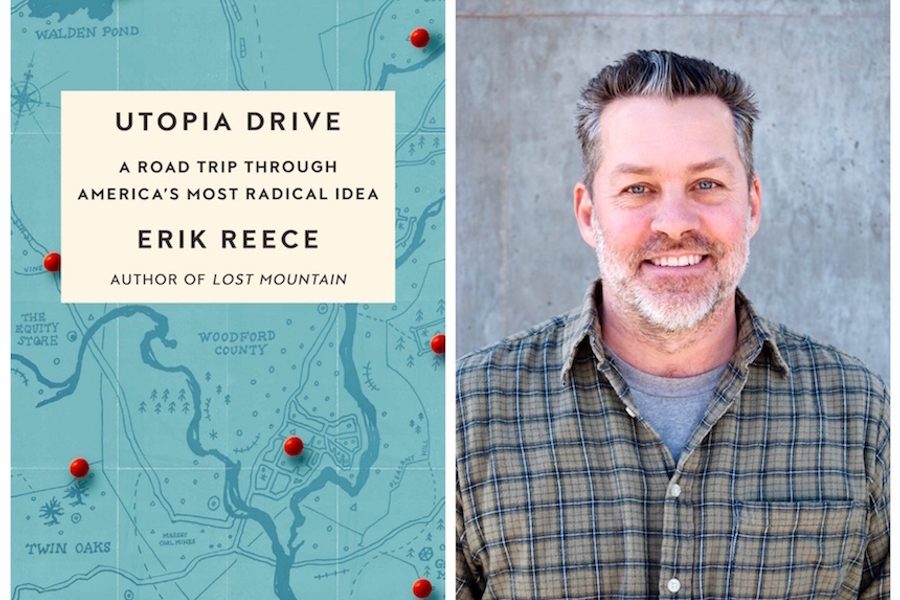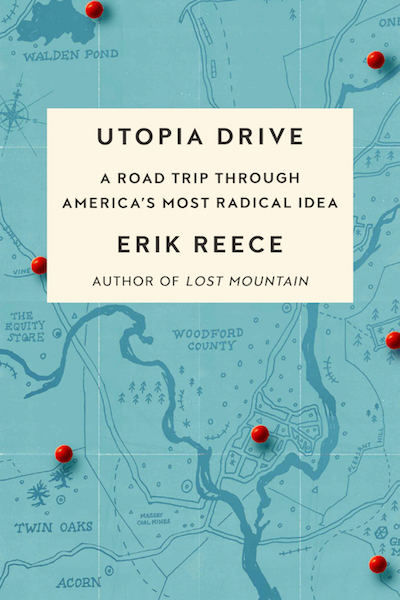
Since 1980, the wealthiest Americans have seen their incomes quadruple, while those of the poor and middle class have flatlined.
The more this inequality grows, the sicker and more punitive our country becomes. The epidemiologists Richard Wilkinson and Kate Pickett have recently shown that every single societal problem, with no exception, can be tied directly to income inequality. As a result, the United States has higher levels of mental illness, infant mortality, divorce, obesity, violence, incarceration, and substance abuse than all other countries north of the equator. “In more unequal societies,” they wrote, “people are five times as likely to be imprisoned, six times as likely to be clinically obese, and murder rates may be many times higher.” Consider these two statistics: the United States makes up 5 percent of the world’s population, but we consume 25 percent of its resources and we incarcerate 25 percent of its prison population. I don’t believe those numbers are a coincidence.
Almost all the wealth from extracting those resources, those fossil fuels, goes to the very richest, and the very poorest end up in jail because either they can’t get by or they find illicit ways to get by or simply cope. Money that might go into education or even food stamps goes instead into the penal system. Money that might fund badly needed American infrastructure instead funds 761 military bases all over the world. Money that might be loaned by a community bank is placed as a Wall Street bet that a bond will default. Money that might reward real work circulates instead inside that same echo chamber of less and less tangible securities. Wealth becomes less accessible to most Americans, while the wealthy themselves use their power to ensure that politicians do their bidding, mostly in the form of lowering their tax rates and deregulating the industries they control.
Large corporations shell out $6 billion annually to employ 35,000 D.C. lobbyists to protect their wealth. Such game rigging has bred cynicism and pessimism among the body politic, and as a result, we have the lowest voter turnout of the world’s 40 industrial democracies. The more we retreat from, or are pushed from, the public sphere of influence, the more we lose trust in our public institutions and in one another. According to the National Opinion Research Center, levels of trust in the United States have fallen from 60 percent in 1960 to less than 40 percent in 2004. Into that vacuum, the imperious 1% pours more money and accrues more power. That decline in trust has paralleled a widening income gap in the United States — the largest in this country’s history, according to the 2009 census. When trust weakens and economic inequality widens, an epidemic of social maladies follows. What it all adds up to, said the Supreme Court justice Louis Brandeis, is this: “We may have democracy, or we may have wealth concentrated in the hands of the few, but we can’t have both.”
We obviously have the latter in this country, and I’ve come to believe that things will only get worse if we don’t engage in some serious utopian thinking. Fighting for something like campaign finance reform is laudable, but that isn’t what I consider utopian thinking because it is an effort to fix a plutocratic system that doesn’t deserve to be salvaged. It isn’t enough. Utopian thinking, by contrast and by definition, works outside the system, in a bottom-up fashion, to create a new paradigm and thus create a true form of democracy that is worthy of its name. In my view, such thinking must begin by addressing this country’s most intractable problems, namely, our gross disparity in wealth and a fossil fuel – based economy that is completely unsustainable in the face of climate change, resource depletion, and the degradation of our ecosystems.
Because of those two realities, we live in a seriously dystopic country, one where both the political and the economic systems are failing us in very fundamental ways. Right beneath the surface of the utopia of consumerism lurks an ugliness and a darkness we are doing our best to ignore.
People, planet, profits
What would the utopian alternative look like? I drove up to Cleveland, Ohio, to find out. In the hard-worn neighborhood of Glenville, I found a worker-owned business that installs solar panels throughout the city. Started in 2009, Ohio Cooperative Solar employs 21 men and women, mostly from Cleveland’s lower-income neighborhoods. But Ohio Cooperative Solar isn’t a welfare experiment; it’s a business, one that was turning a profit five months after launching.
Actually, Ohio Cooperative Solar is part of a larger network of worker-owned businesses in Cleveland called the Evergreen Cooperative. It began five years ago when the new CEOs of Cleveland Clinic, Case Western Reserve University, and University Hospitals — all located within a one-mile radius of what’s known as Greater University Circle — started giving some serious thought to the eight square miles of shuttered businesses and derelict homes in the neighborhoods that surround their institutions. At the peak of the manufacturing boom in the 1950s, Cleveland was the 5th largest city in the country; today it is the 5th poorest, and those well-paying manufacturing jobs are long gone. So the CEOs formulated a new strategy: if their individual “anchor institutions” purchased $3 billion worth of goods and services a year, why not redirect some of that purchasing toward a local economy that would employ men and women from the surrounding neighborhoods? If only 10 percent of that $3 billion was redirected locally, that would inject $300 million into an area with over 25 percent unemployment.
The philanthropic Cleveland Foundation ponied up $3 million in seed money, the institutions each added $250,000, and the Evergreen Cooperative was born. The primary goal was to create good, environmentally sustainable jobs that would not be outsourced. Since the Cleveland Clinic and University Hospitals weren’t going anywhere, and since hospitals generate a lot of dirty sheets and towels, the Evergreen Laundry set up shop in October 2009 as the pilot business. Today the laundry, which uses energy-efficient washers and dryers, is housed in a modest one-story LEED-certified building beside Ohio Cooperative Solar.
There are three frescoes painted on the side of the building that faces the street; at the top of each painting are the words “People Before Profits.” That is the succinct philosophy of the Evergreen Cooperative, and it suggests how this new model breaks down the usual socialist-capitalist antipathy. The laundry employs 50 men and women who clean 12 million pounds of linens a year and who will eventually own 100 percent of the company. So are they socialists who own the means of production or capitalists who own their own company? The answer, I suppose, is that they represent a new economic model that can’t easily be squeezed into such narrow dichotomies. They have solid jobs and are accumulating wealth, and they are doing so in a way that harkens back to Robert Owen’s original vision of a unity village where labor was the only true measure of wealth.
The basic economic logic of any Evergreen Cooperative is to say to the anchor institutions, “What can we put together that you will buy?” The answer tends to fall along three lines: waste streams, food streams, and energy streams — goods and services that cannot be easily outsourced. So Ohio Cooperative Solar formed soon after the laundry with the goal of providing 30 installations of 100 kilowatt solar panels for hospitals, schools, and municipal buildings across Cleveland. In 2009 the Ohio legislature mandated that, by 2012, 60 megawatts of the state’s energy use be solar-generated. But because most of these anchor institutions are nonprofits, they cannot benefit from the federal government’s 30 percent kickback to businesses that invest in alternative energy. So, instead, Ohio Cooperative Solar recently installed a 100 kilowatt unit on the roof of the Cleveland Clinic, which will “rent” the panels and pay twelve cents per kilowatt hour for the energy they generate — comparable to the rate it pays for electricity from the grid. The co-op plans 30 more 100 kilowatt installations over the next three years — which is to say, the employees could soon find themselves the owners of the largest solar energy company in the Midwest.
While about 11,000 companies in the United States offer some form of employee stock ownership, many of these don’t involve real decision making on the part of employees. But when making decisions for the company, Ohio Cooperative Solar operates on a one-worker, one-vote model for everyone, from the CEO, Steve Kiel, to the newest hire. They all gather at 7:30 on Monday mornings to discuss company business. And compared with your typical American CEO, Keil is paid accordingly. The company’s bylaws stipulate that the difference between the highest- and lowest-paid member of the cooperative can never exceed a ratio of five to one. (The average American CEO makes 300 times more than the average employee.) If a new employee is making $10 an hour and $21,000 a year, the CEO cannot make more than $100,000.
After a six-month apprenticeship period, Ohio Cooperative Solar employees can apply to join the broader Evergreen Cooperative. If voted in, they receive a two-dollar raise and begin buying into the company through a payroll deduction of $0.50 an hour. Over three years, this adds up to $3,000, an ownership stake that, based on the co-op’s projections, should be worth $65,000 in nine years. (Median household income in the neighborhood is $18,000.)
When I spoke with him, Kiel was working on a dozen or so ideas for new cooperatives. He was running projections to see how many people each potential co-op could hire. “Most capitalists have a return-on-investment threshold,” Kiel says. “Typically a venture capitalist firm is going to put up a million dollars up front and will look to get an annual return of 70 percent. We don’t have that capitalist on board, so we have a different measure, which is how many people can we hire.” So Ohio Cooperative Solar has a different kind of bottom line with a different definition of wealth. Under this model, wealth means good pay, health benefits, a democratic workplace, an equity stake for every worker and jobs that don’t get outsourced but do reduce the country’s carbon footprint.
That is to say that this small company offers a model for solving, or at least beginning to solve, the problems of income inequality and unsustainability.
Recalibrating the dystopic direction of this country
The Cleveland model is obviously just one example of what I would call the serious utopian thinking, the radical reimagining, that we need to truly recalibrate the dystopic direction of this country, to begin pushing in the direction of solidarity and reconstruction. By combining the ideas of worker ownership and a local currency, one can begin to get an image (however sketchy a horizon image) of what a modern eutopia (a good place, a better place) would look like. Every successful American utopia from Pleasant Hill, the Shaker community in Kentucky, to Twin Oaks, an intentional community in Virginia, was a decentralized experiment where a very self-reliant community provided for as much of its own sustenance as possible. Any market economy has to be small and locally focused to avoid the abuses of the shareholder logic that says the only real value is profit. By producing first the things it needs, and importing after that only what it cannot produce, a community retains much longer the wealth it generates. In doing so, it also better defends against predatory corporations that feel no responsibility to the community, or to protecting its land, air, and water. Such an economy would subvert and decentralize the power of large corporate polluters while it shortens supply lines and therefore both produces and consumes less fossil fuel.
The American economist Kenneth Boulding once remarked, “Anyone who believes that exponential growth can go on forever is either a madman or an economist.” To move away from the idea of exponential growth will obviously mean moving away from a manufacturing economy. (The United States has lost 5 million manufacturing jobs since 2000 anyway, and there’s little sign of their returning.) More than that, though, it will mean finding new ways to define growth. That supposedly inviolable economic concept will have to be decoupled, as economists say, from the production of an endless supply of goods to mean, instead, rewarding human activity that doesn’t rely on fossil fuels. The manufacturing that does remain will have to shift from resource-intensive industries to those that will both profit from and support a sustainable economy — industries built around public transportation, redesigned and retrofitted cities and buildings, and the production and delivery of renewable energy. Beyond that, our utopian past suggests that we should replace our current culture of accumulation with a needs-and-services economy that actually delivers on the promise of well-being instead of hocking flimsy substitutes made in China and Bangladesh. Our consumption of material goods tends to happen in isolation and tends to reinforce the competitive sense that what I have is better than what you have.
Such a psychology and such an economy create an endless negative feedback loop in which we keep consuming to the detriment of the natural world, and toward no enduring sense of real satisfaction with ourselves or others. Studies have shown that though we consume twice as much as we did in the 1970s, our sense of happiness hasn’t moved up an inch. Add to that Wilkinson and Pickett’s research, which shows that weak community life is linked to increased consumption and, conversely, that greater equality lessens our pressure to consume. This country’s gross domestic product, the sole measure of our economic success, has risen 80 percent since then, yet psychologists and sociologists can find little evidence that we are any more content than we were four decades ago. In fact, since 1970, the United States’ Index of Social Health, a seventeen-indicator measurement that combines data on suicide rates, income inequality, and life expectancy, has fallen 45 percent. A graph that measures these two trends, GDP and social health, looks like a ski slope, with social health measured on the downhill run, while GDP rises like a chairlift. If GDP were a reliable indicator of well-being, we would be in a world of hurt, given that Americans consume five times more resources than the planet can sustain. Yet a mounting body of research has begun to show how the economy that destroys the natural world is really not the economy we truly desire, and for one reason: it doesn’t deliver on what Aristotle called eudaemonia, or “well-being.” Instead, well-being derives from what the political psychologist Robert Lane calls “warm interpersonal relations,” “easy-to-reach neighbors,” “encircling, inclusive memberships,” and “solid family life.”
An economy based on more authentic needs and services (good local food, good restaurants, good schools, good health care, good live entertainment, sustainable design, and clean energy) would, I believe, speak to a truer sense of well-being while simultaneously making our communities much less dependent on resource extraction. What’s more, an economy based on human capital (labor, talent, conscientiousness) instead of natural capital (fossil fuels) and financial capital (debt) would go a long way toward increasing a sense of trust and conviviality within communities. Social capital would circulate alongside a local currency, and the local currency would help maintain the circulation of local goods and services. Thus a positive feedback loop would replace the negative loop I’ve just mentioned. And here’s another positive feedback loop: the more we trust others, the more of the hormone oxytocin we produce in the brain; and the more oxytocin we produce, the more we trust others. In short, an economy of pleasure and purpose would replace an economy of accumulation and waste.
How can we place an actual scaffolding beneath such airy castles? I’m certainly not advocating a return to the isolationist utopian communes of the 19th century. I am, however, advocating for a new kind of economy that adopts or adapts many of their principles in the name of stronger communities and a stable environment in which those communities can exist. Because in this country what we need to do and what we’re willing to do politically are such vastly different things, we need utopian thinking that can mine those gaps and offer a model for another way forward. One of the more inspiring aspects of such thinking is that we don’t have to wait for quiescent politicians to act or for corporations to find a moral compass. We can work between the cracks of these vastly compromised institutions until the cracks grow so large that the institutions crumble out of irrelevance.
Given that Wall Street banks have pretty much abandoned the traditional role of banking (making loans that benefit individuals and communities), why not create local, no-interest loan programs like the one advocated by Susan Witt, the Executive Director of the Schumacher Center for a New Economics in Great Barrington, Mass.? Why not create some version of a local currency? Why not start a Local Exchange Trading System where members of a community, often lower-income or no-income members, withdraw services they need (from home health care to tutoring) and deposit in exchange the talents and services they themselves can provide? Why not create larger credit-clearing exchanges that, if taken to their logical extreme, would eliminate the most destructive elements of modern banking? Speaking of a credit commons, why not work to take back the other commons (seeds, forests, rivers, alternative energy, public spaces, the broadcast spectrum, the atmosphere) through trusts that carefully manage resources and distribute any income from those resources through dividends paid to every stakeholder involved, not just stockholders of some distant corporation? Why not return wealth instead of illth to the commons? Why not establish land trusts that would prevent such speculative disasters as real estate bubbles and that would allow egalitarian access to the natural riches that human beings, after all, did not create and therefore should not enclose? Why not fight the problems of unemployment and climate change by setting up worker-owned businesses that service the anchor institutions of every city in the country? Why not reject the damages of oil-based agriculture and join the Community Supported Agriculture movement, in which subscribers buy directly, and eat seasonally, from a local farm?
That’s by no means a comprehensive list of questions, but imagine how different this country would look if even a fraction of Americans took such questions seriously and acted on them. Of course all these ideas sound — I’ll say it one last time — utopian. Yet the only thing that prevents us from acting upon any of them is our own lassitude, our prevailing sense that nothing important can be done to change the current state of things. That, of course, is exactly what the very few who buy and wield power in this country want us to believe. To succumb to that lassitude is to admit defeat and await the rising floodwaters. The only force that can overcome such lethargy is the engine of the imagination. Nothing fires the individual and collective spirit like the possibility of a more welcoming collective future and a more authentic personal present. We can head out today toward the utopia of reconstruction. We can build the road as we travel.

Excerpted from Utopia Drive: A Road Trip Through America’s Most Radical Idea by Erik Reece, published by Farrar, Straus and Giroux. Copyright © 2016 by Erik Reece. All rights reserved.




